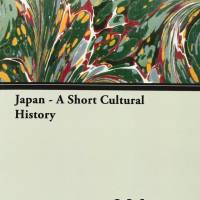If there's room in your life for just one general history of Japan, let this be the one. In the hands of a master, history becomes art. British scholar-diplomat Sir George Bailey Sansom (1883-1965) was such a master.
In just over 500 pages he takes us from prehistory to the verge of modernity, 1867, without ever seeming rushed or short of time for persons and ideas whose contributions to the slow evolution of this island nation, so long cut off from the main currents of international traffic, risk being forgotten. Thus Nakatomi no Kamatari — Nakatomi who? — is "one of the greatest figures in Japanese history," though 1,400 years have rolled by since the sordid 7th-century palace coup he led yoked Japan firmly to China's cultural orbit.
Not power alone but — naturally, this being a "cultural" history — art is treated with loving, sensitive attention. Of the 15th-century painter Sesshu Sansom writes, "It is as if the artist had been able to seize the very core and essence of beauty, to reduce it to terms of the uttermost simplicity." And of Japanese poetry: "When Blake saw 'a world in a grain of sand, and a heaven in a wild flower' he was feeling what Chinese and Japanese poets had expressed many centuries before him, and what was almost a commonplace of Zen attainment."
Everything this writer touches springs to life in the reader's mind, even a fragment of a land register dated 726: "Female. Idzumo no Omi Shimame. Age 19. Scar on left cheek. Escaped 722." Escaped what? Taxation. Escaped where, to what fate? We will never know.
Read archived reviews of Japanese classics at jtimes.jp/essential.



